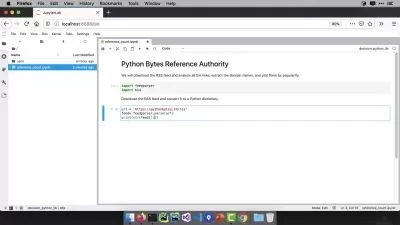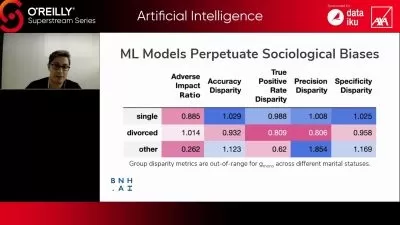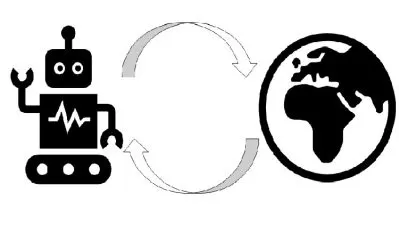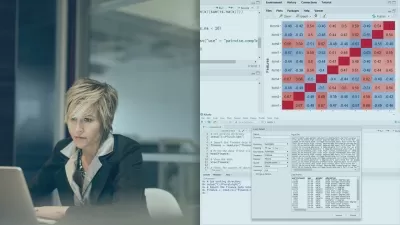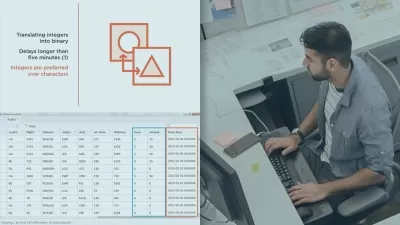Python and R for Machine Learning & Deep Learning
Manuel Ernesto Cambota
32:09:16
Description
Learn Machine Learning and Deep Learning using Python and R in 2024
What You'll Learn?
- Basics to advanced Python programming
- Data manipulation with Pandas
- Visualization with Matplotlib and Seaborn
- Fundamentals of R
- Statistical modeling in R
- Introduction to neural networks
- Building models with TensorFlow and Keras
- Convolutional and Recurrent Neural Networks
- Comprehensive understanding of machine learning and deep learning
Who is this for?
What You Need to Know?
More details
DescriptionWelcome to the gateway to your journey into Python for Machine Learning & Deep Learning!
Unlock the power of Python and delve into the realms of Machine Learning and Deep Learning with our comprehensive course. Whether you're a beginner eager to step into the world of artificial intelligence or a seasoned professional looking to enhance your skills, this course is designed to cater to all levels of expertise.
What sets this course apart?
Comprehensive Curriculum: Our meticulously crafted curriculum covers all the essential concepts of Python programming, machine learning algorithms, and deep learning architectures. From the basics to advanced techniques, we've got you covered.
Hands-On Projects: Theory is important, but practical experience is paramount. Dive into real-world projects that challenge you to apply what you've learned and reinforce your understanding.
Expert Guidance: Learn from industry expert who has years of experience in the field. Benefit from his insights, tips, and best practices to accelerate your learning journey.
Interactive Learning: Engage in interactive lessons, quizzes, and exercises designed to keep you motivated and actively involved throughout the course.
Flexibility: Life is busy, and we understand that. Our course offers flexible scheduling options, allowing you to learn at your own pace and convenience.
Career Opportunities: Machine Learning and Deep Learning are in high demand across various industries. By mastering these skills, you'll open doors to exciting career opportunities and potentially higher earning potential.
Are you ready to embark on an exhilarating journey into the world of Python for Machine Learning & Deep Learning? Enroll now and take the first step towards becoming a proficient AI practitioner!
Who this course is for:
- IT Professionals: Broaden your career prospects by transitioning into the field of data science
- Students: Whether you’re an undergraduate or a postgraduate student, this course provides a robust framework for understanding machine learning and deep learning concepts
- Career Changers: Looking to pivot into a rapidly growing field with immense opportunities? This course will provide you with the necessary skills and knowledge to make a successful transition into data science and machine learning.
- Entrepreneurs and Business Owners: Leverage the power of machine learning and deep learning to drive business innovation and efficiency. Understand how to implement data-driven strategies to improve decision-making and gain a competitive edge.
- Anyone Interested in Data Science: If you have a passion for data and a desire to learn how to extract valuable insights from it, this course is for you. Gain a comprehensive understanding of machine learning and deep learning, regardless of your current level of expertise.
Welcome to the gateway to your journey into Python for Machine Learning & Deep Learning!
Unlock the power of Python and delve into the realms of Machine Learning and Deep Learning with our comprehensive course. Whether you're a beginner eager to step into the world of artificial intelligence or a seasoned professional looking to enhance your skills, this course is designed to cater to all levels of expertise.
What sets this course apart?
Comprehensive Curriculum: Our meticulously crafted curriculum covers all the essential concepts of Python programming, machine learning algorithms, and deep learning architectures. From the basics to advanced techniques, we've got you covered.
Hands-On Projects: Theory is important, but practical experience is paramount. Dive into real-world projects that challenge you to apply what you've learned and reinforce your understanding.
Expert Guidance: Learn from industry expert who has years of experience in the field. Benefit from his insights, tips, and best practices to accelerate your learning journey.
Interactive Learning: Engage in interactive lessons, quizzes, and exercises designed to keep you motivated and actively involved throughout the course.
Flexibility: Life is busy, and we understand that. Our course offers flexible scheduling options, allowing you to learn at your own pace and convenience.
Career Opportunities: Machine Learning and Deep Learning are in high demand across various industries. By mastering these skills, you'll open doors to exciting career opportunities and potentially higher earning potential.
Are you ready to embark on an exhilarating journey into the world of Python for Machine Learning & Deep Learning? Enroll now and take the first step towards becoming a proficient AI practitioner!
Who this course is for:
- IT Professionals: Broaden your career prospects by transitioning into the field of data science
- Students: Whether you’re an undergraduate or a postgraduate student, this course provides a robust framework for understanding machine learning and deep learning concepts
- Career Changers: Looking to pivot into a rapidly growing field with immense opportunities? This course will provide you with the necessary skills and knowledge to make a successful transition into data science and machine learning.
- Entrepreneurs and Business Owners: Leverage the power of machine learning and deep learning to drive business innovation and efficiency. Understand how to implement data-driven strategies to improve decision-making and gain a competitive edge.
- Anyone Interested in Data Science: If you have a passion for data and a desire to learn how to extract valuable insights from it, this course is for you. Gain a comprehensive understanding of machine learning and deep learning, regardless of your current level of expertise.
User Reviews
Rating
Manuel Ernesto Cambota
Instructor's Courses
Udemy
View courses Udemy- language english
- Training sessions 251
- duration 32:09:16
- Release Date 2024/08/12






